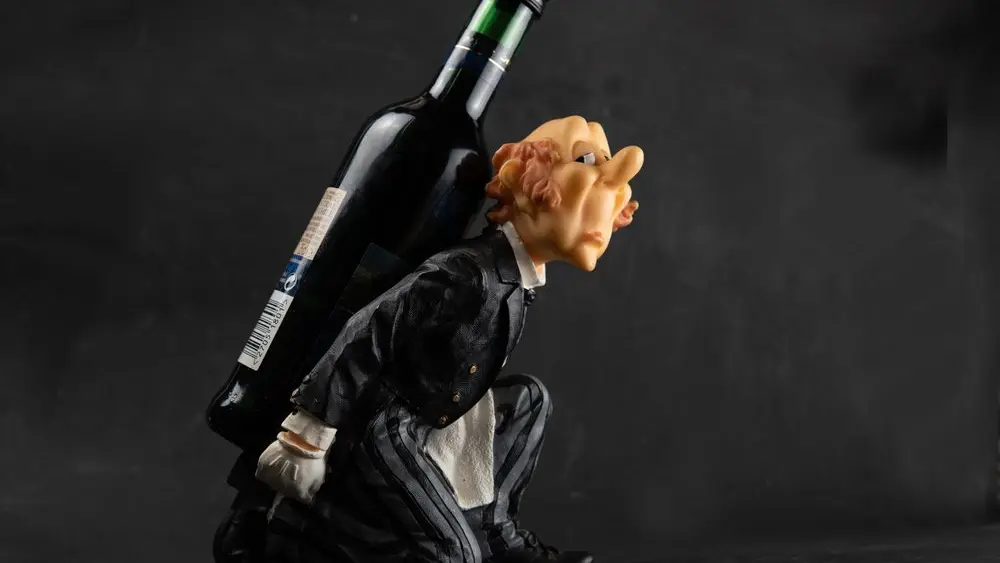Because the wine industry is now oversaturated with brands that have followed the “premiumization” bubble, some experts are extolling the virtue of discounting wine to increase sales. But don’t be too quick to take the bait because once price becomes your key value proposition, it’s nearly impossible to do anything more than chase your tail into the discount bin at your local supermarket or online flash-sale site.
The parable
Two small winery owners are sitting at a bar commiserating about how challenging the wine industry has become. The younger one complains about the high cost of labor, supplies and marketing and the relentless demand of wholesalers and consumers for discounts.
“I mean, at this point, I’m already losing about $1 per bottle that sell at these prices,” the younger owner says.
The older owner nods her head and looks back down into her beer mug.
“How are you going to fix that?” she asks.
The younger owner chews his lip for a moment and then his face brightens — he’s had a brilliant idea.
“Maybe with greater discounts I can make up the shortfall with more volume!” he exclaims.
Of course the young winery owner is being foolish. He can’t make up a shortfall by increasing discounts because that will only exacerbate the problem. But this is often exactly what producers will do to move inventory.
The problem with discounts
Because of the unique nature of alcohol sales in the United States, wine pricing is a complicated and cumbersome puzzle for most wineries. Part of the problem is that unless the wine is sold exclusively through the winery itself, wholesalers have the ability to dictate and affect pricing strategy with little or no say from the producer. For example, let’s say a wine producer sells a case of wine to a new distributor on the East Coast. The distributor pays only 50 percent (or less) of the suggested retail price for the wine, which is normal. If the wine costs a consumer at the winery $10 a bottle, the distributor will pay only $5. Normally, the distributor sells the wine to a retail shop or restaurant for around $7, who then marks it up to $10 or even $15. In this case, anyone coming to the winery gets what appears to be a deal, or at least doesn’t pay more than they’d spend at a liquor store.
But let’s say this distributor has sat on the producer’s case of wine for months without selling it. To get the wine moved out of inventory (the next vintage is coming!) they discount the wine — they “burn” the inventory and sell the case at a loss for $3 a bottle to a local retailer in some far-flung Southern bayou who promptly puts the wine in the discount bin and on their website for $4 a bottle.
At about the same time the wine producer has a group of long-time club members coming in to visit the winery from out of town. This particular collection of customers has been drinking their wine since the first launch, and they visit every year, often bringing friends who also join the club. These patrons are like gold for any producer and they are treated like royalty—they get first dibs on limited-selection wines and are offered lunch, and winery owners are always present during their annual tasting. On this visit they’ve brought their son, who just graduated from Cornell University. He has a degree in hospitality management and is interested in learning more about the wine business.
While scrolling through his phone during lunch the young man asks the winery owner, “I’m wondering if you provide any discounts for wine-club members.”
“We do,” the owner responds proudly. “For longtime customers like your parents we provide a 20 percent discount.”
The young man nods his head, still scrolling through his phone until he’s seemingly found what he wants. Thrusting the screen in front of the owner’s face he smiles.
“But I can get a better discount online,” he says. “Looks like even up to a 60 percent discount.”
Discounts are always attractive until customers start to notice them and begin to believe that the value proposition for your brand is more with getting a “good deal” than getting high quality, a unique experience or something more meaningful than just cheap goods and ever-cheaper prices. Discounts are certainly one of the tools wine producers can consider as the wine market begins to tighten. However, used without a clear strategic vision, the ramifications of discounting can be costly and difficult to recover from, even if you try to make it up in volume.
Author
-

Tim Carl lives, writes and teaches in Calistoga. He grew up in St. Helena and traces his Calistoga grape-growing roots back five generations. You can reach him at tcarl@northbaybiz.com.
View all posts



